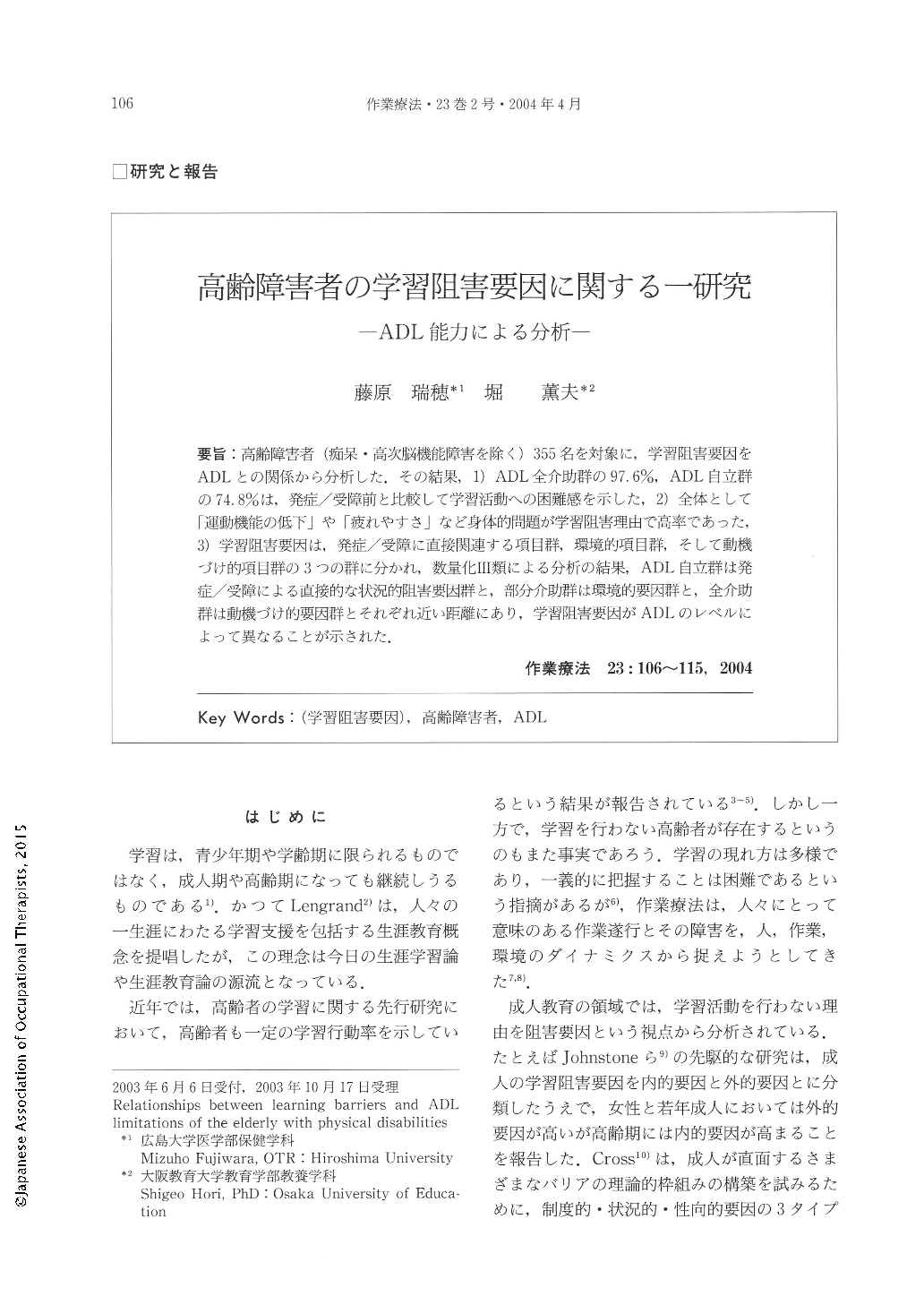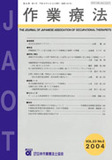Japanese
English
- 販売していません
- Abstract 文献概要
- 1ページ目 Look Inside
- 参考文献 Reference
- サイト内被引用 Cited by
要旨:高齢障害者(痴呆・高次脳機能障害を除く)355名を対象に,学習阻害要因をADLとの関係から分析した.その結果,1)ADL全介助群の97.6%,ADL自立群の74.8%は,発症/受障前と比較して学習活動への困難感を示した,2)全体として「運動機能の低下」や「疲れやすさ」など身体的問題が学習阻害理由で高率であった,3)学習阻害要因は,発症/受障に直接関連する項目群,環境的項目群,そして動機づけ的項目群の3つの群に分かれ,数量化Ⅲ類による分析の結果,ADL自立群は発症/受障による直接的な状況的阻害要因群と,部分介助群は環境的要因群と,全介助群は動機づけ的要因群とそれぞれ近い距離にあり,学習阻害要因がADLのレベルによって異なることが示された.
The purpose of this study is to examine the relationships between learning barriers and activity limitations of the elderly with physical disabilities. Subjects of the questionnaire survey included 355 community residents of age 60 and over with physical disabilities but without neuropsychological dysfunctions. After the analysis of the learning barriers of the elderly with disabilities, relationships between 17 learning barriers areas and ADL were analyzed by Hayashi's Quantification Method Ⅲ.
Main results obtained from the analysis were as follows : 1) 97.6% of ADL Dependent Group and 74.8% of ADL Independent Group felt difficulties in learning compared to before; 2) Learning barriers related to physical disability proved to be the highest-ranked overall deterrent. 3) Three category groups were identified with regard to learning barriers; namely, a group related to physical disabilities, a group related to environmental factors, and a group related to motivation. The ADL Independent Group showed an orientation toward the learning barriers associated with physical disabilities, while the Partially Dependent Group tended toward environmental factors, and the Dependent Group more toward motivation barriers.

Copyright © 2004, Japanese Association of Occupational Therapists. All rights reserved.


